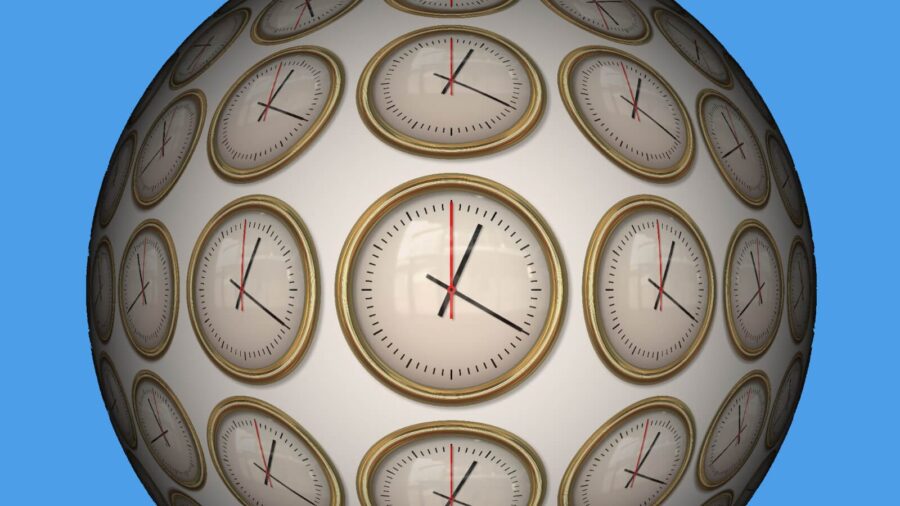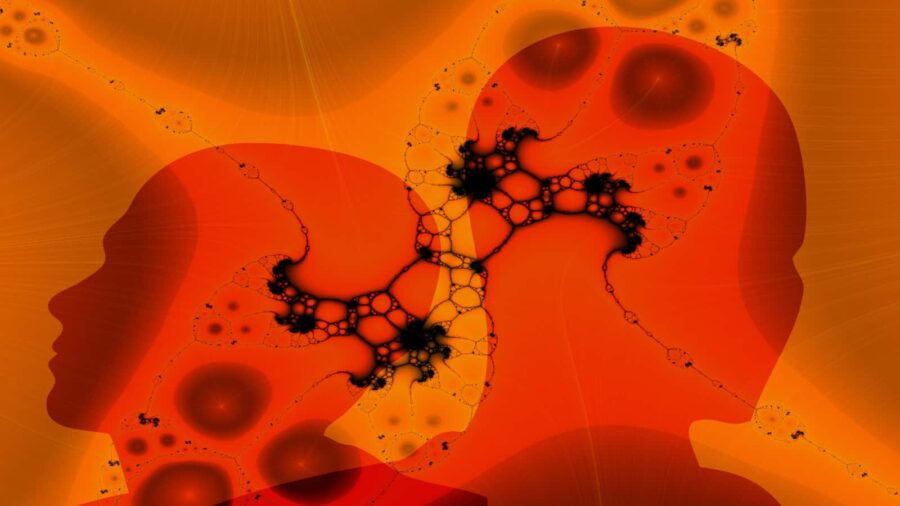What is ADHD?
Here is my integrated view of ADHD. It’s based on neuroscience, genetics, and psychiatry. More importantly is that it’s based on thousands of hours hearing the experiences of the hundreds of ADHD adults that I have coached and connected with. Here's 20 quick questions to help determine if you are ADHD.

If ADHD, we are always in a desert and always seeking an oasis. Low dopamine results in our brain’s lack of stimulation. As a consequence, we are driven by engagement, working memories fade without sufficient interest, and high rewards may be recklessly pursued. Low dopamine results in:

Weak dopamine connections to frontal lobes result in weak executive functions (EF) that fail to properly provide emotional regulation, time sense, and tribal compliance. With no EF conductor waving his stick our brains are less inhibited and controlled, more open and exposed. Compromised executive functions, so:

With tight synaptic connections and nor-adrenaline (nor-epinephrine) the primary transmitter, the right brain seems to work fine in ADHD. With much use it becomes dominant. With ADHD we lean to the right – in a big-picture way. and love to see patterns, to create, our emotions drive us. Dominant right means:

It’s frustrating to read so often, that people with ADHD can’t pay attention. People with ADHD have no issue paying attention to something they find stimulating and fascinating, like a personal project, computer game or argument. We can become so fixated on the subject of interest that we hyperfocus to the exclusion of everything else. Helpful when studying or writing this web page but problematic when we miss our meeting because we can not tear ourselves away from the internet or ignore a partner’s request to help with the kids!
“In people without ADHD, when the default mode network is active, another network, called the task positive network, is suppressed. When the brain is performing tasks that require focus, the task positive network takes over and suppresses the default mode network. If this reciprocal relationship degrades, the ability to focus declines.” – Anne Trafton, June 10, 2014, McGovern Institute for Brain Research.
The main problem comes from low-interest, low-stimulation tasks – like homework, tax returns or household chores. Here our under-stimulated minds struggle to apply themselves. We find ourselves either day-dreaming, bored or more often distracted instead. Sometimes distraction is quite involuntary, the chatter in our heads demands attention or the daydream lasts a while. But more often there is an awareness that the non-critical, yet fascinating work project is taking too much time. Worse is the guilty and unhappy pursuit of games, browsing the net or watching to avoid the task at hand.
With ADHD our focus is wide, we notice a lot around us. When the subject is interesting to us, then we can narrow our focus well. But when the task is uninteresting, mundane, administrative or routine – we struggle.

People with ADHD struggle with working (short-term) memory and to a lesser extent with long-term memory and recall. Working memory is like the RAM in a computer, it is where information is temporarily held whilst constructing a sentence or forming an idea, solving an equation, remembering where we put the keys or someone’s name.
If the information is “valuable” we then store it in long-term memory and recall it later when required. It seems like the importance or value we place on information is key to the issue. How well we store information in memory is a function of how stimulating the information is to us. In an under-stimulated mind, we are less able to imprint the information. We tend not to think of dates, names, key locations as very important and hence their memories are lost.
People with ADHD tend to forget trivial and low-interest information. Memories of future plans and goals seem to be affected too, often to the upset of friends, colleagues or family.
The problems with memory are pervasive and often missed. We find it harder to learn, study and revise because we can't remember the equation, date or sequence. At work we forget instructions, lose key information we need to write a reports after seeing a client or patient. Learning an instrument, language, recipe or route in a car can be that much harder if you are ADHD. Holding future objectives, goals, important dates and critical objectives all depend on temporal memory where we are challenged too.
As a consequence we tend to improvise more, invent dynamic solutions, create new approaches and generally "wing-it" due to our impacted memory circuits.

Our default network is always active and demands stimulation. We are a traveller in the desert, desperately seeking an oasis. We need it to stay focused and engaged. This deep drive for high stimulation in ADHD is often satisfied with excitement, learning, argument & debate, new ideas, novelty & change, creativity, sports, exploration, with people, and sometimes skydiving. For many with ADHD, feeling bored, restless, ill at ease, frustrated and inattentive, the solution to under stimulated ADHD is from far less helpful solutions. Many adults with ADHD become addicted to activities, food, drugs and play – to poorly correct the ADHD dopamine deficit.
Our high stimulation seeking nature leads us to seek stimulation through work too. We set up exciting new businesses, we drive ambulances, we take on twenty projects at once, we present and perform to audiences, we change the game, we push the envelope and defy convention. If we are ADHD, our quest for stimulation can drive us to drink, but it can drive us to explore further too. If you always have a water bottle with you in the desert, you’ll never discover the beautiful oasis that awaits you over the distant dune.
The frontal lobes provide the “executive functions” (EF) of the brain, some describe EF as the brain’s “conductor”, keeping all parts of the brain playing in harmony. The executive functions’ style is more “influencer”, than “manager” though. With ADHD and poor dopamine transmission, the signals from the frontal lobes to the rest of the brain are weak. In effect with ADHD, our brains are missing their conductor. Well more like our brain’s conductor keeps wandering off and is absent through most of the performance! Without a conductor, the lives of people with ADHD may be less ordered and controlled, more emotional and chaotic. In some ways, however, this also means less shackled and freer to be ourselves.
Executive functions arrived late in the evolution of the brain. As humans moved into larger more complex groups, we started to work on many long-term objectives like raising crops and rearing animals. New brain functions developed in the frontal lobes and foreheads bulged to accommodate. They gave the ability to control, suppress and better manage our basic emotions. They helped us understand and manage our time. They made it easy to work in groups and to conform and comply with rules and authorities. These functions work in ADHD, but just not so well. We can exert some control of our emotions but anger, anxiety, and depression are common byproducts of these strong feelings. We have a sense of time, but tasks are avoided if they are not due tomorrow. ADHD difficulties with planning, lateness, and procrastination all stem from our poor relationship with time. We may comply and conform on the whole – we understand but don't necessarily follow rules and regulations. Yet seldom are we are at ease with authorities: teachers, managers, or officials. Prisons hold many disobedient adults with ADHD. People with ADHD are less controlled. We tend to be mavericks, volatile less restrained in thought and action, present in the moment and have problems with rules; but we are also genuine and honest, ill-inclined to denial, focussed on the best solution, independent of the majority view and happy to do things our own way.

The frontal lobes have a dampening or inhibiting effect on our emotional reactions, helping people take a more steady response. With ADHD, we have weak brakes on our emotions with low dopamine affecting frontal lobe communication channels. If we are sad we can drop into a funk, even a depression, that lasts days or much worse. Some people with ADHD when they are angered will argue, or even rage, without restraint. We can act impulsively without thought of the consequences.
For many, ADHD can bring anxiety from the brains engagement with highly stimulating, yet upsetting, worries and concerns. We fail to regulate our sleep patterns, either waking too early or as is very often the case not feeling tired enough to go to bed. We can be up late, exhausted and awake on an endless stimulation pursuit on TV, games, Facebook or the Internet: some further thoughts on getting to bed on time.
Our self-esteem is impacted by low dopamine too, we get a mental minimal “pat on the back” for a job well done. Besides, as perfectionists and problem solvers, with ADHD we tend to focus on problems and shortfalls rather than success. We struggle with excessive feelings of rejection, always thinking the worst. Despite knowing the problem it still hurts. It can painful to realise that in our thoughts we have turned against our supposed "rejecter", only to realise we were completely mistaken - they don't hate us they just missed our email!
Thankfully, there is a flip side to every coin, a Ying and Yang of ADHD. People with ADHD are emotional. When we are excited, we can be truly passionate. We can be completely present in love. We can be driven to find solutions, create works of art, inventions, businesses, right wrongs and help others too.
People with ADHD are open and honest, perhaps less guarded emotionally. Our minds are open to everything around us, our hearts are open to others suffering and we can enthuse, amuse and entertain those around us.

With ADHD we are in the moment, lost in time. It’s like everyone else is born with a built-in calendar and clock in their heads. In some ways time is very precious to us, we want to be doing the most interesting thing, right now! We are the child that eats the first cookie offered, unable to delay gratification and wait even a moment to win the second cookie. Rational, intelligent adults with ADHD, fully aware of the consequences frequently ignore time and opt out. We choose not to plan. We ignore our diary. We knowingly distract ourselves even on a deadline. In some ways, it seems that we want to be lost in our own private time zone. ADHD time warning signs include:
This is why adults with ADHD cite procrastination as their #1 issue. Here are two famous ADHD? procrastinators. If we cannot see the future return from doing something now, nor see the consequences of not doing it, we will procrastinate. We find something immediately more interesting instead. I struggle to go cycling, not because I don’t enjoy it, because I do, but because I cannot emotionally connect with the pleasure I will feel once on the bike. When I do get on my bike, I’m surprised how much I enjoy cycling – I should cycle more often! Even knowing this doesn’t change my thinking the next time.

For a society to prosper it must have social control, an easy way to pass out and accept social values, conventions, rules, and behaviors. “Executive function relates to abilities to differentiate among conflicting thoughts, determine … future consequences, working toward a defined goal, prediction of outcomes, expectation based on actions, and social control, the ability to suppress urges that, if not suppressed, could lead to socially-unacceptable outcomes” – Wikipedia
As humans evolved into highly complex societies the need for acceptance of social constructs like governments, laws, marriage, and religion grows. There was an evolutionary forcing factor for compliance. Fortunately, in people with ADHD, with weak executive function influence, we are less convinced by authority. ADHD folks never follow convention, usually taking a different, untested, and more exciting way instead. As kids at school, we get in trouble for asking how come teachers get to control us. At work, we get in trouble for asking how come systems operate the way they do. Whenever we are given a rule, our response is “why?”. We take nothing of authority at face value.
Sadly, a fair proportion of the prison population is ADHD, statistics vary up to 60%. Predisposing ADHD jail factors include poverty and self-medication but a serious disregard for people in power and the rules they uphold, is a primary factor too. With ADHD we sit on the rebellious side of the line, a long way from the compliant side. Though jail may be an outcome of being ADHD, rebellion and change can be positive outcomes too of a brain that is “less inclined to follow”.
History books reveal many ADHD mavericks, who found it easier to challenge authority than did their peers. ADHD scientists daring to be different, ADHD doctors braving medical convention, and ADHD artists changing creative landscapes. The ADHD choice is to rebel, revolt, petition, demonstrate, overthrow or emigrate, but never to comply. Being a maverick isn’t always easy, it certainly makes life more challenging but sometimes society benefits. We need ADHD mavericks to break rules, test limits, overturn orthodoxy, rebel against dictators, invent the unimaginable, explore where no one has been, joke about the King, and to be driven to create, change, challenge, and disrupt.
Adults with ADHD, see themselves as intuitive, creative, big-picture thinking and inventive, which maps to neuroscience’s contemporary views of right-brain functions. The right hemisphere has greater breadth, flexibility, and generosity. It is holistic, intuitive and it integrates details from the left brain into the wider picture. Right is responsible for relationships, for empathy and appreciating the meaning of gestures, facial expressions, the tone of voice and our emotional life. It experiences time as a continuum and responds to music, poetry, spiritual and moral dimensions. The left hemisphere is detail-oriented, prefers mechanisms to living things, and is inclined to self-interest. It focuses on specific details, analyses, and returns this detailed picture to the right half. The left-brain organizes, manipulates and controls details for a specific purpose. It wants consistency and measures, classifies and creates labels and abstractions. Since our ADHD genes interfere with dopamine transmission, access to left brain functions is hard, the right brain tightly connected with nor-adrenaline/nor-epinephrine is fine. Over time our right brains grow to be the more dominant in our thinking.
ADHD experts, usually the ones with ADHD themselves, talk of the strengths of hyper-focus and creativity. Some other experts seem on an obsessive mission to deny any possible upside to ADHD. Research to date is limited, with poor sample groups and meaningless tests of creativity. Worse most ADHD research has derived from a subset of the ADHD population – hyperactive boys. They are the visible tip of the ADHD iceberg, and their important issues have been researched extensively but the far larger part of the iceberg – girls, non-hyper boys, and adults – lies beneath the surface, invisible and under-researched. Hopefully, with objective gene testing for ADHD, we may one day have some hard scientific research on our differences, that will cast valuable light on our creativity and sense of the big-picture.

One of the key functions of the brain is to recognise patterns, noticing the way it usually rains when the sky is very dark, that when you drink more than six glasses of brandy you wake with a sore head, that apples fall from trees, that bankers never lose and that humour often relies on juxtapositions.
With our ADHD right-brain dominance, we love to make connections between concepts, ideas, and thoughts. When the result of pattern recognition springs to mind, we call it intuition. We don’t know how we got the result, but we know it to be correct. We just somehow know that someone is unhappy, we feel that the movie will have a happy ending, our hunch is that gold prices will rise. We have spotted the patterns that emerge as our ADHD intuition without sometimes any conscious thought.
At school, we struggle with rote learning, we fail to hold sequences and remember processes. Instead, we come to rely on our right brain. We easily understand core elements and concepts and fail to remember details. Instead, we learn to infer and derive from first principles. We love to discover new information and relate it to and connect it to what we know but we struggle to remember instructions or memorize facts. Whilst our mind wrestles with problems and solutions, we rely more on intuition for our answers, discoveries, and insights than on sequential memory, instructions, and conventional wisdom.
The right brain is holistic, everything is connected. When we acquire new information, we find a fit in our complex, expanding knowledge matrix in our ADHD minds! That’s why ADHD children and adults ask “Why?” so often. We are filling in the gaps in our knowledge, always expanding our matrix, taking nothing at face value. Every idea, concept or fact that we read, hear or see is challenged and tested. If it fits with existing understandings it is patched in, if not it’s either rejected or existing knowledge is corrected. This “matrix” right-brained thinking means ADHD adults tend to be consistent, open and honest. It’s uncomfortable holding unconnected or inconsistent values, thoughts or views in our minds.
If ADHD we are driven to see the “big picture”, we love to solve a problem, the bigger the better. We want to discover how it all connects.

Creativity comes from seeing patterns and making new connections to form ideas and solutions. Some definitions: "to transcend traditional ideas, rules, patterns, relationships… meaningful new ideas, forms, methods, interpretations” - www.dictionary.com; "the use of imagination or original ideas to create something; inventiveness” – Oxford Dictionary; "solving hitherto unsolved problems, when developing novel solutions…, or when developing original and novel products” – Parkhurst (1999).
People with ADHD frequently express how they feel creative and inventive. Many articles and books by authors with ADHD themselves support this view but this is poorly supported by research. Research is limited and often definitions of creativity are suspect. ADD/ADHD creativity is not about a desire to paint or even produce divergent ideas. It is about an emotion.
People with ADHD love to create something that is unique and of themselves. We don’t want to follow a process, but we crave the reward from creation. We love the hyper-focus that comes from making something that has not been made before. This something might be a new enterprise, a new painting, a novel performance, an original essay, a radical design, an improved process or a new combination of ingredients. If ADD, we like, love to create. Here are some thoughts on whether ADHD people are "right-brained".
Behavioural research suggests a heightened level of creativity is associated with lessened inhibition, “creative individuals appear to be characterized in part by the ability to perceive and describe what remains hidden from the view of others”. This cognitive disinhibition, allowing more stimuli to enter conscious awareness, a desire for novelty, and neural hyper-connectivity (associations among distantly related stimuli) facilitates an enlargement of “the range and depth of stimuli available in conscious awareness to be manipulated and combined to form novel and original ideas” from "Creativity and psychopathology" in Canadian Journal of Psychiatry, Carson, S. H. (2011).
Our weakened frontal lobes, mean our ADD/ADHD nature is not to conform but to welcome change and variety. Our joy is to be making something that is new and uniquely of ourselves. We can then fall into hyper-focus, flow, our engaged and productive state. Whether the creation is art, invention, solution, business or joke, with ADHD we love to create.

If ADHD we are less able to focus on the abstract concepts of money and long-term rewards but can easily focus on our interests and emotions. People with ADHD are emotionally driven, in everything they do. We are not able to disconnect and functionally do what is required, we must want to do it. After all our dominant right brain is home to all emotions.
A lack of motivation leads to many of the very well documented issues with procrastination, time management and failure to complete tasks like tax returns and homework. Outside influences like deadlines, rules, and authority have limited effect. If we are not interested in doing something, we find it very hard, maybe impossible to do. Here are some thoughts on managing your ADHD emotions.
We need the emotion, there is no “just do it” in ADHD.
But our uninhibited emotions can be great drivers too. With powerful enthusiasm for doing what is right and a passion for making a difference, ADHD people can often motivate and drive teams and organizations to success. We are happy when we are following our interests and doing what matters to us. The trick is alignment, doing what engages you. Not easy in our process-loving and administration-loving world.
ADHD happiness comes from following our emotions, not denying them. Successful folks with ADHD shape their world to fit themselves, rather than changing themselves to fit the world. They find jobs where drive and interests align, sometimes the only way is to start a new company! They find friends and colleagues who accept their differences and welcome their humor, honesty, and passion. They pursue projects that matter.
Everyone with ADHD is carried exclusively by their emotions. The trick is to tap into them by figuring out what matters, your values, interests and passions and to build a life to best accommodate your interests. With ADHD, we are great at doing what we love to do…
Adults with ADHD, see themselves as intuitive, creative, big-picture thinking and inventive, which maps to neuroscience’s contemporary views of right-brain functions. The right hemisphere has greater breadth, flexibility, and generosity. It is holistic and intuitive, and it integrates details from the left brain into the wider picture. Right is responsible for relationships, for empathy and appreciating the meaning of gestures, facial expressions, the tone of voice and our emotional life. It experiences time as a continuum and responds to music, poetry, spiritual and moral dimensions. The left hemisphere is detail-oriented, prefers mechanisms to living things, and is inclined to self-interest. It focuses on specific details, and analyses, and returns this detailed picture to the right half. The left-brain organizes, manipulates and controls details for a specific purpose. It wants consistency and measures, classifies and creates labels and abstractions. Since our ADHD genes interfere with dopamine transmission, access to left brain functions is hard, the right brain tightly connected with nor-adrenaline/nor-epinephrine is fine. Over time our right brains grow to be the more dominant in our thinking.
ADHD experts, usually the ones with ADHD themselves, talk of the strengths of hyper-focus and creativity. Some other experts seem on an obsessive mission to deny any possible upside to ADHD. Research to date is limited, with poor sample groups and meaningless tests of creativity. Worse most ADHD research has derived from a subset of the ADHD population – hyperactive boys. They are the visible tip of the ADHD iceberg, and their important issues have been researched extensively but the far larger part of the iceberg – girls, non-hyper boys, and adults – lies beneath the surface, invisible and under-researched. Hopefully, with objective gene testing for ADHD, we may one day have some hard scientific research on our differences, that will cast valuable light on our creativity and sense of the big-picture.
Andrew Lewis is an Adult ADHD Coach, writer and founder of SimplyWellbeing. He has over 16,000 hours of experience in coaching over 600 adults with ADHD. Andrew helps entrepreneurs and creatives with ADHD thrive and achieve wellbeing and is always happy to have a free chat to discuss coaching. Andrew ran a major ADHD support group and even an ADHD diagnostic clinic for a while. Andrew is an adult ADHD Coach backed with business expertise from a twenty years career in software, from roles in programming, through marketing, sales at IBM, then to running a few software start-ups.